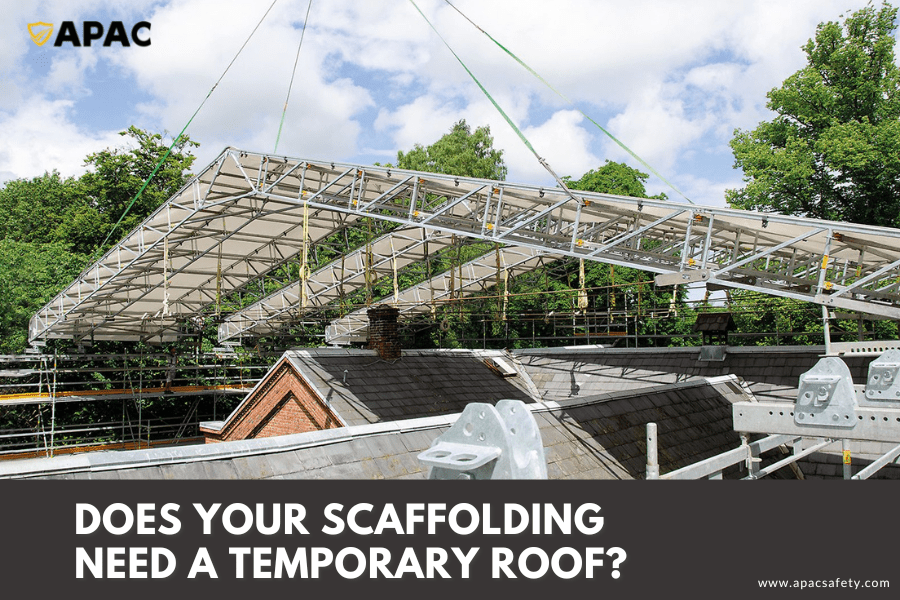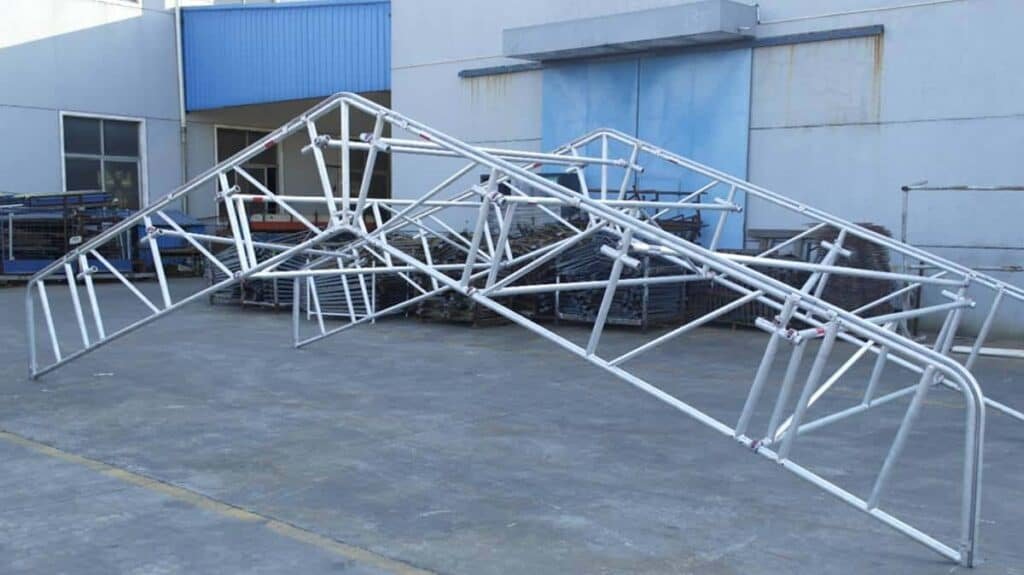INTRODUCTION
Does your scaffolding need a temporary roof? No matter whether you’re a contractor or working on a building site, the answer is almost certainly yes. Temporary roofing can make all the difference when it comes to protecting your work from the weather. This means that you may only occasionally have to worry about keeping your roofing in good condition, and the worker can continue to work to ensure smooth and timely delivery of the project.
So how can we choose if you need temporary roof scaffolding? We’ll answer that question and more in this article.

What Is Temporary Roof Scaffolding?
Temporary roof scaffolding is a temporary structure that is erected on top of scaffolding to protect it from the weather. It’s often used for long-term projects where a permanent roof is not needed. Temporary roof scaffolding consists of an aluminum structure and keder roof sheeting and are commonly used to protect buildings under construction.

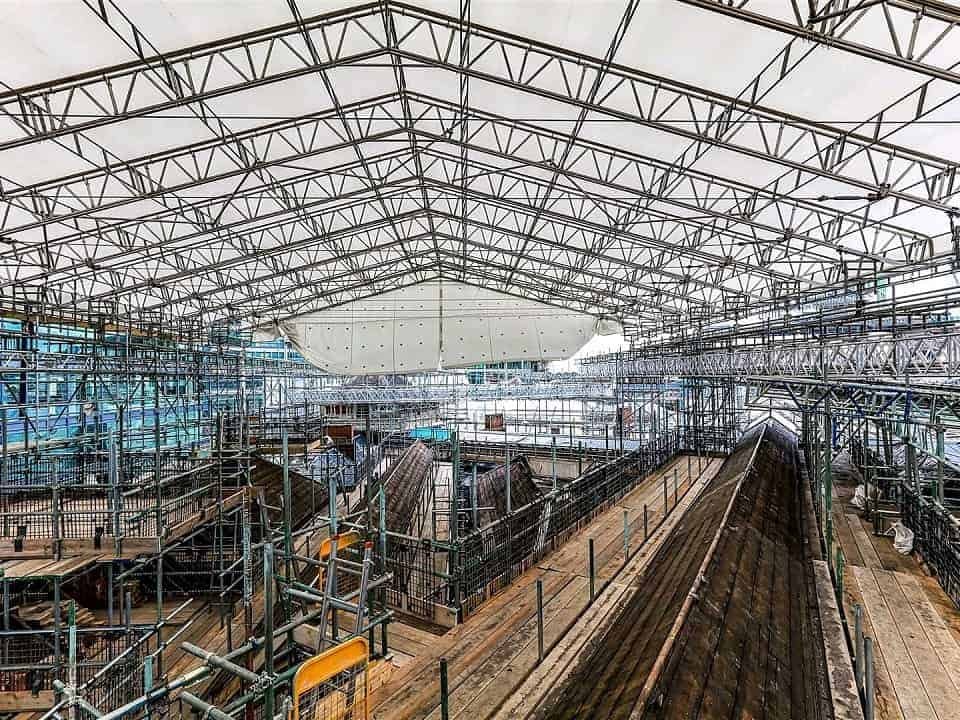
What Are The Benefits Of A Temporary Roof Cover?
- Protection from bad weather
Temporary roofs are designed to withstand bad weather. If you’re working with scaffolding structures, it’s important that your temporary roof cover protects you from the weather. It can be windy, rainy, and even snowy during the construction season. Waterproof keder roof sheeting will keep the interior of a building and any equipment or materials inside dry while protecting your project from damage caused by rain and snowfall.
- UV Protection
While many materials are not sufficiently resistant to sunlight—canvas, for example, can fade quickly due to its porous nature, and plastic tarps can begin to decompose after one season of exposure—temporary roofing clearly does not have this problem, with excellent UV protection, and workers can work with peace of mind under the shelter of a temporary roof without being affected by exposure to the sun.
- Lightweight
The temporary roof scaffolding is made from high-strength aluminum and PVC tarpaulin. The temporary roof scaffolding is lightweight and easy to transport and install.
- Long-Running Projects Can Be Protected In This Way
Temporary roofs are ideal for long-running projects. Temporary roofs are designed to withstand bad weather. As we all know, building a project doesn’t happen overnight; it usually takes months or even years, not to mention tall and complex buildings. Installing a temporary roof will ensure that workers work smoothly and your project is delivered on time.
- Cost-effective & Versatile.
Temporary roofing is a cost-effective and versatile option. Temporary roof coverings can be easily installed and removed as needed, making them a flexible solution for a variety of situations, such as emergency repairs, temporary structures, or construction projects. And it usually costs less than permanent roofing solutions.
- Safety
Scaffolding temporary roof helps create a safer work environment, especially during construction or renovation projects. It prevents workers from being exposed to hazardous weather conditions or falling debris. At the same time, it does not interfere with the progress of the project and ensures that the project is completed on schedule.
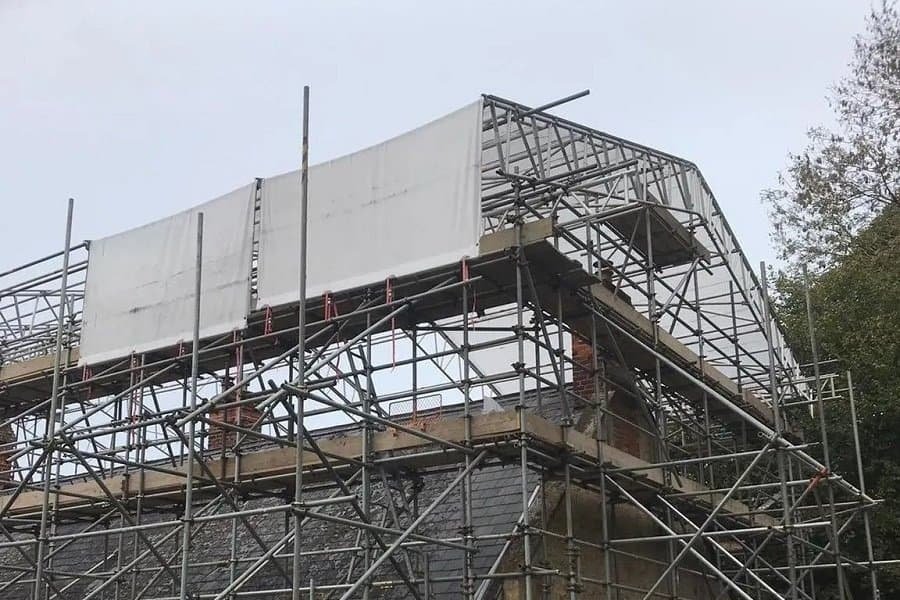

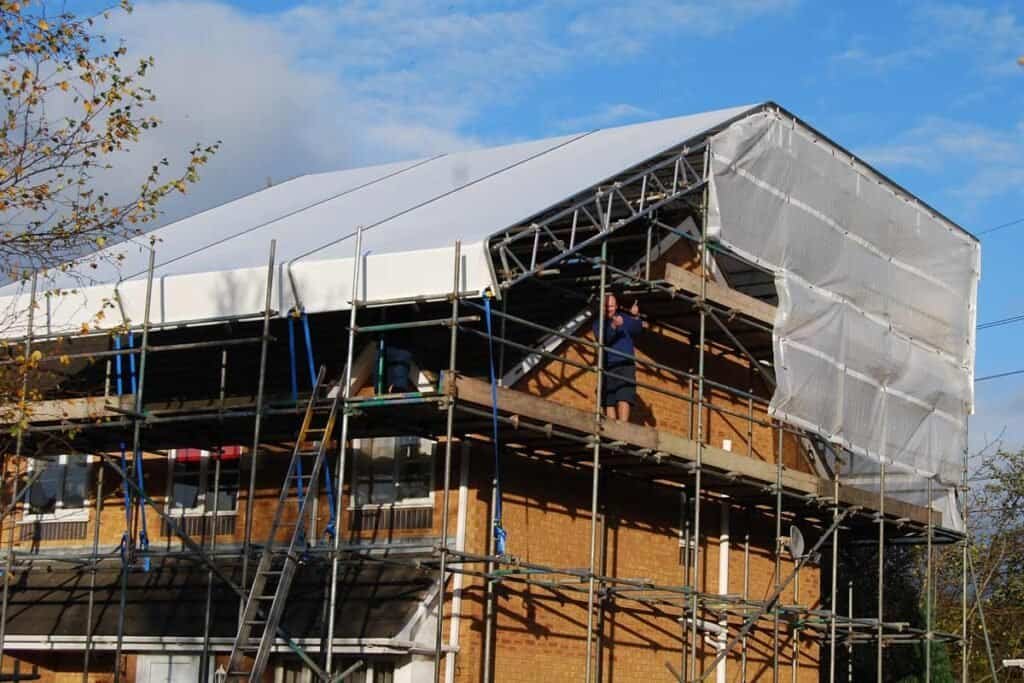
It is important to make sure that you choose the most suitable temporary roof for your project to ensure it remains weatherproof and safe for your workers to operate on construction sites. And then let’s read the following and look at how to choose a temporary roof.
What Are The Benefits Of A Temporary Roof Cover?
- Determine What You Need.
In a previous blog post <What’s your best choice for temporary roof cover>, we mentioned that there are three types of temporary roofs (corrugated iron、keder roof、shrink warp roofing), each with different advantages and disadvantages and different scenarios, so the first step in choosing a temporary roof is to decide which one to use according to your situation.
- Material
The temporary roof consists of two parts: the structure is usually made of aluminum, and the sheeting is made of PVC tarpaulin instead of PE tarpaulin. Before you buy it, confirm this information. (About the difference between PVC tarpaulin and PE tarpaulin, you can read the blog below.
- Consider Your Project Size.
You should take into account the size and shape of your project when you are picking the temporary roof that you need. The size of the project will mostly affect what kind of roof you will need. In general, temporary roofs are 20–40 m wide, but if your project is on a larger scale, you will need some customization to fit the construction site.
- Know Your Brand of Scaffolding
To use a temporary roof in conjunction with scaffolding, you must purchase a temporary roof that will adapt to your scaffolding. Temporary roofs on the market can fit only some brands of scaffolding, some can fit most scaffolding brands, or they can be customized to your needs. Please take note of this information when purchasing.
- Take Care of the Budget Constraints.
Your budget will be key in determining your choice of temporary roof. I will not recommend any particular brand as there are many options available on the market. You should look for a temporary roof that is highly durable, easy to install, and fits your budget.
Conclusion
In this article, we introduce the temporary roof and how to choose it briefly, I hope this article has helped you understand how to choose a temporary roof for your project. If there are any other questions, please feel free to contact our expert and we will respond back as soon as possible.


